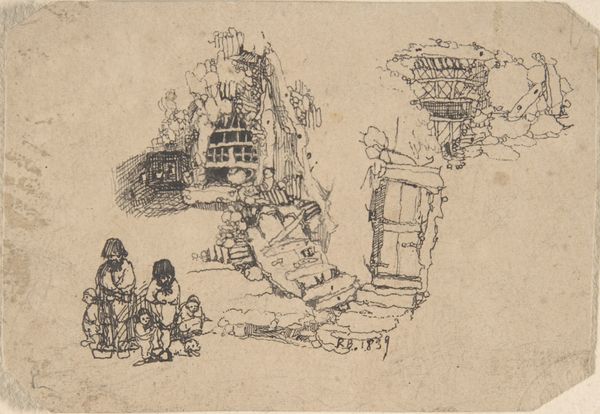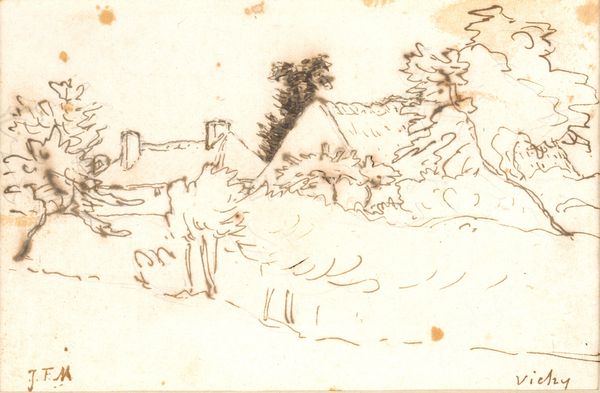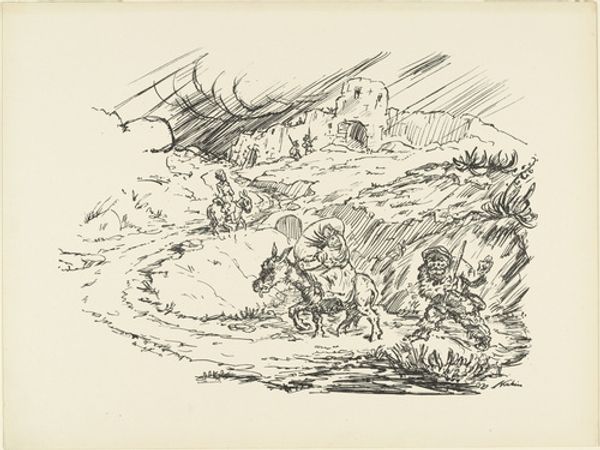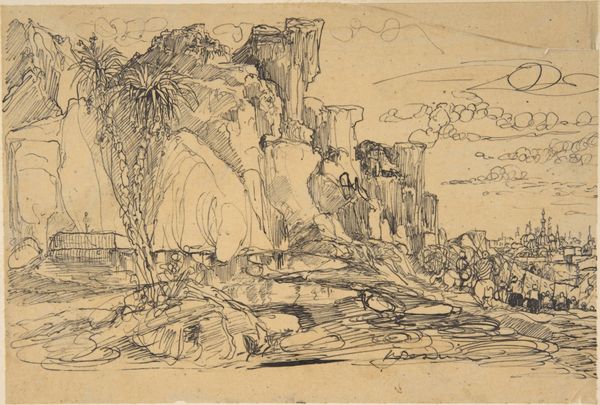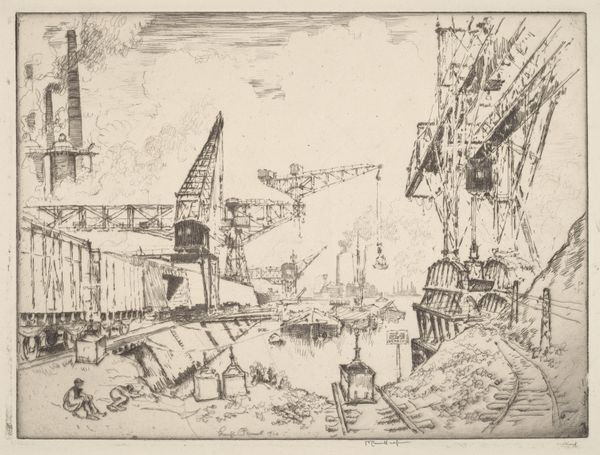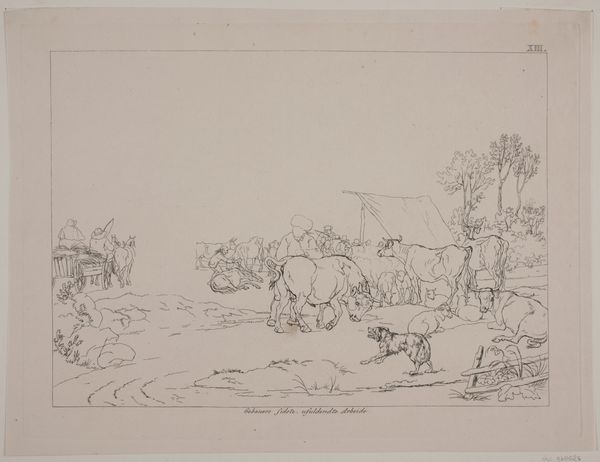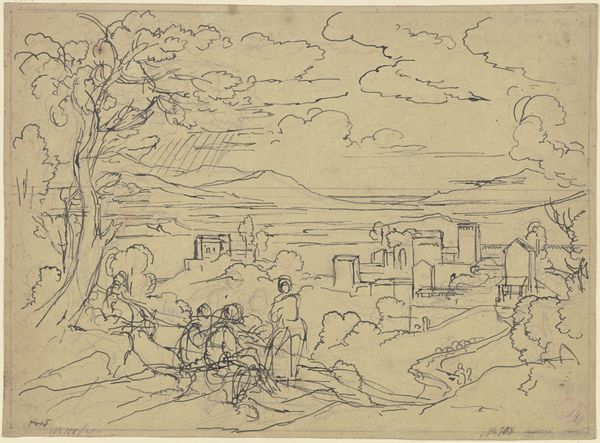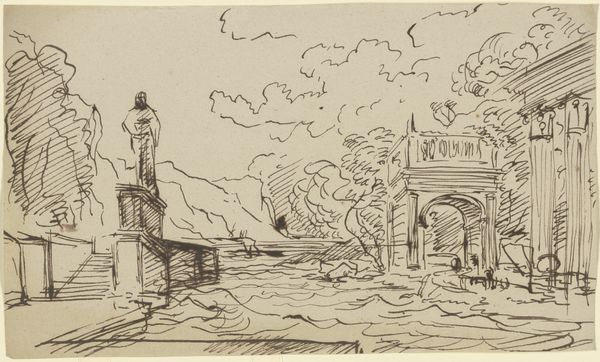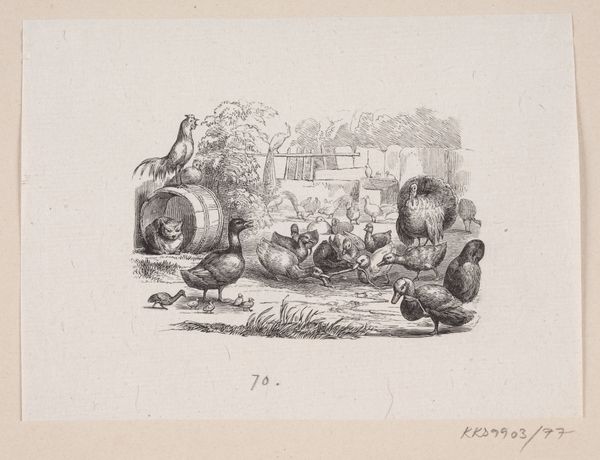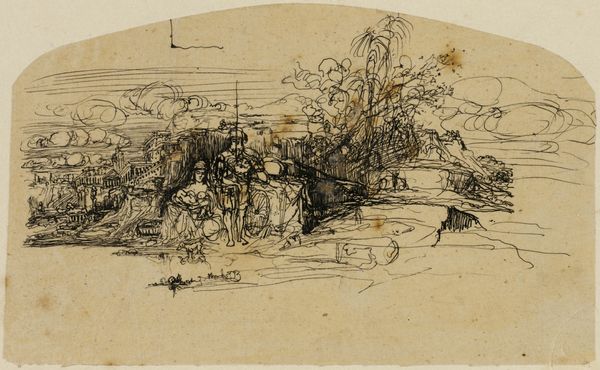![A Village Scene in India [verso] by George Chinnery](/_next/image?url=https%3A%2F%2Fd2w8kbdekdi1gv.cloudfront.net%2FeyJidWNrZXQiOiAiYXJ0ZXJhLWltYWdlcy1idWNrZXQiLCAia2V5IjogImFydHdvcmtzL2UxZDAxMTgwLTViODMtNDdjMy05OWJjLTBkZTFmY2Q1ZDc4Ni9lMWQwMTE4MC01YjgzLTQ3YzMtOTliYy0wZGUxZmNkNWQ3ODZfZnVsbC5qcGciLCAiZWRpdHMiOiB7InJlc2l6ZSI6IHsid2lkdGgiOiAxOTIwLCAiaGVpZ2h0IjogMTkyMCwgImZpdCI6ICJpbnNpZGUifX19&w=3840&q=75)
drawing, ink
#
drawing
#
landscape
#
ink
#
romanticism
#
orientalism
Dimensions: overall: 17.1 x 25.9 cm (6 3/4 x 10 3/16 in.)
Copyright: National Gallery of Art: CC0 1.0
Curator: Here we have "A Village Scene in India [verso]," an ink drawing completed by George Chinnery between 1814 and 1824. Editor: It’s evocative. Something about the ruined architecture juxtaposed with the mundane tasks of the figures…a feeling of entropy, but a peaceful sort of decay. Curator: Let’s look closer at those materials. Note the artist’s confident strokes, the quick application of ink to capture the light and shadow across the textures of the crumbling buildings and the simple tools these people likely used. What strikes you about that? Editor: The ruined building reminds me of a stage set, deliberately evoking a feeling of faded grandeur. The arches, for instance—common symbols of passage and transition. Are they suggesting something about the colonial presence here, a gateway that’s already crumbling? Curator: Perhaps. Chinnery was, after all, working within the conventions of Orientalism, catering to a European fascination with the East. He's showing labor, animal husbandry and typical daily chores. Editor: Precisely! This work feels complicit in perpetuating a romanticized vision of India. The composition is careful. The posture of the woman, and the patient, bovine presence are tropes. Curator: I would say the subject matter might be considered through the lens of romanticism, if one considers the time of production and consumption as a potential commodity to appeal to certain British patrons. Editor: True, these structures speak volumes. How different building practices signal both dominance and perhaps the limits of control in a foreign landscape. Note the figure squatting—seemingly excluded from productive labor. Perhaps even expressing ideas about societal position within this constructed narrative? Curator: A compelling observation about the silent societal role represented by these artistic elements. In looking at Chinnery's work we can delve into the materials that helped make this visual history for future interpretation. Editor: And in doing so, perhaps even peel back the layers of iconography to see more clearly the complex social dynamics at play during that era.
Comments
No comments
Be the first to comment and join the conversation on the ultimate creative platform.

